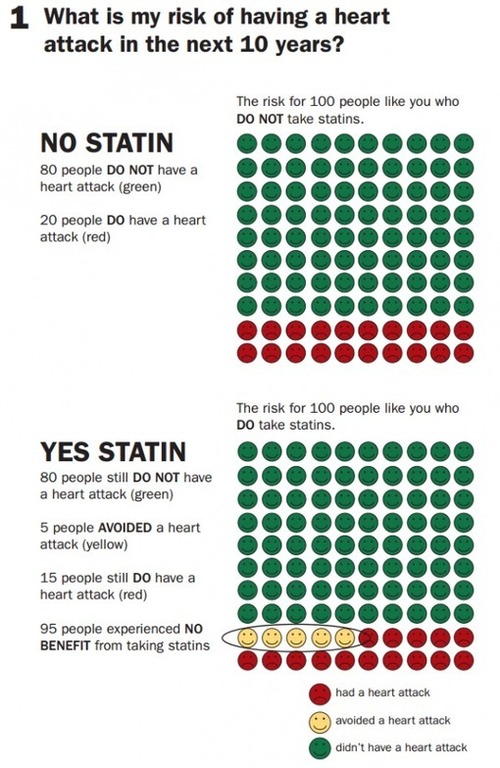Achieving Patient Safety with EMRs
27/09/2013Un site officiel sur la qualité des hôpitaux
27/09/2013On using visual aids to teach patients and improve decision making
Numeracy, even more so than general health literacy, is a strong predictor of comprehension and decision-making in making comparative health care decisions. According to the National Adult Literacy Survey, almost half the general population has difficulty with basic numeric tasks, such as determining the difference between a regular price and a sales price. Even among educated people,one study found that 16% incorrectly answered straightforward questions about risk magnitudes (one question read: “what represents the larger risk: 1%, 5%, or 10%”).
Given both limited training and limited time to spend in each patient encounter, physicians aren’t always able to compensate for these difficulties. When dealing with patients from lower socioeconomic classes, physicians tend towards a less participatory interaction style, and in particular tend to give significantly less information and engaging less in partnership-building. Unsurprisingly, such patients reported less satisfaction with the clarity and explanations of their condition and care. And this lack of understanding may contribute to the worse health outcomes experienced by these patients.
Numeracy, even more so than general health literacy, is a strong predictor of comprehension and decision-making in making comparative health care decisions.
See on www.kevinmd.com




